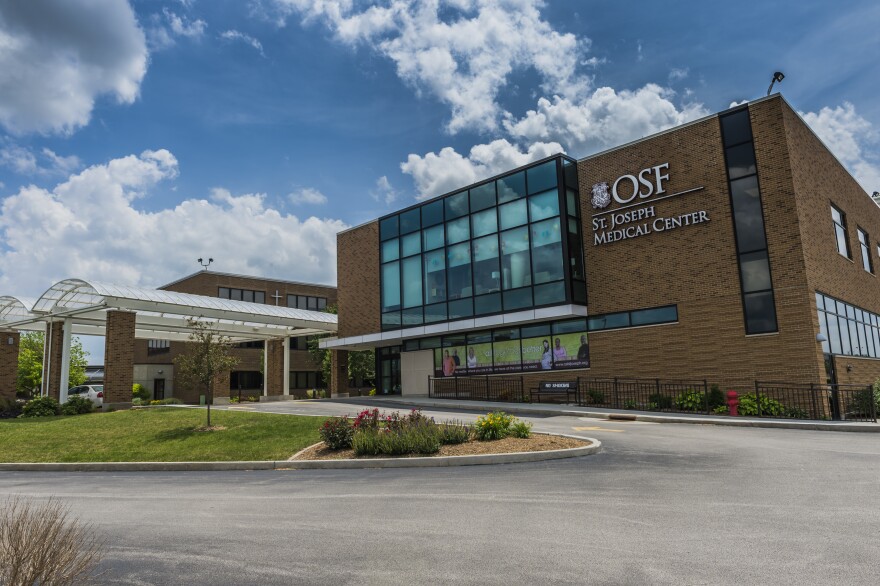In some areas of the country, demographers point to so-called hidden deaths from the pandemic. Those are deaths far above expected average death rates, even considering confirmed COVID-19 fatalities.
Provisional data from the Centers for Disease Control indicates Illinois has an above-average rate. Though reporting numbers lag in various jurisdictions, the CDC reports 104% of regular deaths in the state from Feb. 1 as the pandemic was accelerating until April 25.
New York Times reporters have worked to identify hidden deaths between March 8 and April 11, and they identified 700 excess deaths in Illinois not otherwise attributed to COVID-19 during that period, and a death rate 113% of normal.
McLean County has low testing numbers compared to the entire population and could be expected to harbor some of these hidden deaths. Not so, according to data from the McLean County coroner’s office, comparing several months in the leadup to and during the pandemic period to last year. Coroner Kathy Yoder said the numbers do not suggest such inferences.

As of April 29, there were 99 McLean county deaths from all causes -- a below average number, according to the coroner’s office.
In some hard-hit areas of the country, the number of deaths at home also has risen, another potential indicator of hidden COVID-19 deaths because some people with the illness caused by the virus might not have sought medical help until it was too late. A possible contributor to deaths at home is people who might not have sought medical attention for non-coronavirus medical issues to avoid hospitals in fear of exposure to the virus.
Yoder said she has seen no anecdotal evidence of extra deaths at home in her jurisdiction.
Still, the pandemic has changed how McLean County residents are using the health care system. Both OSF HealthCare St. Joseph Medical Center and Advocate BroMenn Medical Center said they have seen fewer patients seeking treatment at emergency rooms and urgent (URGO as OSF brands it) or PromptCare outlets.
“It does vary based on location, based on PromptCare verses (emergency department), but I would say maybe a 25-33% decrease, more in some areas, less than others,” said OSF President Lynn Fulton.
Advocate BroMenn said the number of patients coming to that emergency department at the beginning of the year was consistent with 2019. In the last several weeks, BroMenn recorded a significant decrease. For BroMenn’s immediate/urgent care sites, it was a busy flu season, but as the flu left and sheltering in place came to be, the number of visits dropped significantly there as well.
Fulton said the decline in use is multifaceted, noting people are putting off care if they can to stay at home.
“When we do shelter in, you tend to see less of some of the things people visit urgent care and ED, car accidents for instance. So, we’ve seen a lot less trauma, and spring time tends to be a time we see more trauma in a hospital environment,” said Fulton. “We also see less of all the other types of disease and infections that people catch because people aren’t out and about, the strep throats and the normal illnesses that go around every year.
Both hospitals said some of the decline in use of emergency care is something they would rather not see.
“What’s most concerning to me is the drop in visits for chest pain,” says Advocate BroMenn Cardiology Nursing Director Laura McCartney. “In April, it has dropped off to about half of what we were seeing in previous months. We don’t want individuals waiting too long to seek medical attention because they are afraid to come to the hospital. If you think you could be having a medical emergency, we want to help you.”
Both hospitals said they have processes in place to keep patients safe.
“We take patients that are suspected of having COVID-19 and put them in a special section and then our other patients in another section. They don’t cross and there is no cross-contamination. We have separate staff for the COVID-19 section,” said Fulton.
In recent days, there have been signs Mclean County residents are getting used to pandemic precautions and are less fearful. Other factors are in play as well.
“Some of that will come back as the weather gets nicer, for instance bicycle crashes,” said Fulton, adding that Gov. JB Pritzker’s adjustment of the shelter-in-place order to allow elective procedures starting in May might have a leading effect as well.
“Things that were elective are becoming more urgent and we’re hearing the patients are anxious to get this taken care of,” Fulton said.
Joint replacements are an example of that category of procedure, she said. Those tend to be painful, limit mobility and make it difficult for people to take care of themselves or family members.
“And while that might have been OK for a little bit, once you put that off for an extended period of time, it really impacts someone’s quality of life,” said Fulton.
Fulton said doctors and nurses are talking with patients about scheduling, what they want done and are answering more questions about safety procedures in that process.
We’re living in unprecedented times when information changes by the minute. WGLT will continue to be here for you, keeping you up-to-date with the live, local and trusted news you need. Help ensure WGLT can continue with its in-depth and comprehensive COVID-19 coverage as the situation evolves by making a contribution.


